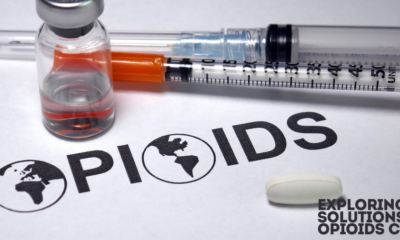Public Health
Health Equity and Social Determinants: Addressing Disparities in Care

Health equity is a central objective in the ongoing global pursuit of improving healthcare outcomes and ensuring fair access to services. It refers to the attainment of the highest possible standard of health for all people, regardless of their socioeconomic status, geographic location, ethnicity, or any other socially determined factor. Achieving health equity requires the elimination of health disparities, which are systematic differences in the health status of different population groups. These disparities are often linked to social determinants of health (SDOH), the conditions in which people are born, grow, live, work, and age. Understanding and addressing these social determinants is essential for eliminating inequities in health outcomes and ensuring that all individuals have equal opportunities to lead healthy lives.
Defining Health Equity
Health equity is a concept rooted in social justice, emphasizing the need to eliminate barriers that prevent people from reaching their full health potential. It differs from health equality, which simply refers to providing everyone with the same healthcare resources, regardless of individual needs or circumstances. Health equity, on the other hand, recognizes that different people have different levels of need and requires that healthcare services be tailored to meet those needs.
The World Health Organization (WHO) defines health equity as the absence of avoidable or remediable differences among groups of people, whether those groups are defined socially, economically, demographically, or geographically. This means that everyone should have the same access to opportunities to attain their highest level of health, and this may require an unequal distribution of resources to address the disadvantages faced by certain groups.
The Importance of Health Equity
Health disparities are a global challenge, affecting both developed and developing nations. In the United States, for example, significant disparities exist across racial and ethnic groups, with African Americans, Native Americans, and Hispanic populations often experiencing worse health outcomes compared to their white counterparts. The causes of these disparities are multifaceted, including social, economic, and environmental factors.
Health inequities also carry a substantial economic burden. The economic costs of health disparities in the U.S. alone have been estimated in the hundreds of billions of dollars annually due to lost productivity, premature deaths, and increased healthcare costs. Addressing health inequities is not only a matter of social justice but also a pragmatic approach to reducing unnecessary healthcare spending and improving the overall efficiency of healthcare systems.
Social Determinants of Health (SDOH)
Social determinants of health are non-medical factors that influence health outcomes. These include a wide range of social, economic, and environmental factors, such as:
Income and Social Status: People with higher income and social status generally experience better health. They often have more resources, better access to healthcare, and healthier living environments.
Education: Higher levels of education are associated with better health outcomes. Education equips individuals with the knowledge and skills necessary to make healthier lifestyle choices and better navigate the healthcare system.
Employment and Working Conditions: Safe and supportive working conditions contribute to better health outcomes, while job insecurity, unsafe working environments, and unemployment are linked to poor health.
Social Support Networks: Strong social support networks, including family and community ties, are crucial for mental and physical health. Social isolation and loneliness have been shown to have detrimental effects on health.
Physical Environment: The quality of housing, availability of safe drinking water, air quality, and access to green spaces are all factors that influence health. Poor environmental conditions are often concentrated in low-income communities and can exacerbate existing health disparities.
Healthcare Access and Quality: The ability to access quality healthcare services is a critical determinant of health. Barriers such as cost, lack of insurance, distance to healthcare facilities, and discrimination can prevent individuals from receiving the care they need.
Cultural and Social Norms: Cultural beliefs and practices influence health behaviors and perceptions of health and illness. In some communities, cultural norms may discourage seeking medical care or may influence the type of care sought.
The complex interplay of these social determinants shapes health outcomes and contributes to health disparities. For example, a person living in a low-income neighborhood may face multiple health challenges, including exposure to environmental hazards, limited access to healthy food, and inadequate healthcare services, all of which can compound the risk of poor health.
The Impact of Social Determinants on Health Disparities
Health disparities arise when certain population groups experience disproportionate health challenges compared to others. These disparities are closely tied to social determinants of health, as socially disadvantaged populations often face greater barriers to health and healthcare.
1. Race and Ethnicity: Racial and ethnic minorities in many countries experience poorer health outcomes compared to the majority population. In the U.S., for example, African Americans are more likely to suffer from chronic conditions such as hypertension, diabetes, and heart disease than their white counterparts. Native Americans have higher rates of substance abuse, mental health issues, and early mortality, while Hispanic populations face higher rates of obesity and diabetes. These disparities are influenced by factors such as income inequality, discrimination, and limited access to healthcare.
2. Income and Poverty: Poverty is one of the most significant predictors of poor health outcomes. Low-income individuals are more likely to experience food insecurity, live in substandard housing, and have limited access to healthcare services. They are also at higher risk for chronic conditions such as diabetes, cardiovascular disease, and respiratory illnesses. Poverty-related stress, including financial insecurity and unsafe living conditions, can also contribute to poor mental health outcomes.
3. Geographic Disparities: Health disparities are not only seen along racial or socioeconomic lines but also across geographic regions. In many rural areas, residents face a shortage of healthcare providers, limited access to specialty care, and higher rates of chronic disease. Urban areas, particularly in low-income neighborhoods, may face similar challenges due to environmental hazards, violence, and inadequate healthcare infrastructure.
4. Gender and Health: Gender also plays a role in health disparities. Women, particularly those from marginalized communities, often face unique health challenges. In many parts of the world, women have limited access to reproductive healthcare, experience higher rates of gender-based violence, and are more likely to live in poverty. Men, on the other hand, may be at higher risk for certain conditions like cardiovascular disease and may be less likely to seek medical care.
5. Disabilities: Individuals with disabilities often face significant health disparities due to limited access to healthcare, discrimination, and socioeconomic disadvantages. They may encounter physical barriers to healthcare facilities, lack of appropriate medical equipment, and healthcare providers who are not adequately trained to address their needs.
6. LGBTQ+ Communities: Members of the LGBTQ+ community often face discrimination and stigma, both within and outside of the healthcare system. This can result in higher rates of mental health issues, substance abuse, and chronic conditions. Many LGBTQ+ individuals report negative experiences with healthcare providers, which can discourage them from seeking care.
Strategies for Addressing Health Disparities
Addressing health disparities requires a multi-faceted approach that targets the underlying social determinants of health. Governments, healthcare systems, and community organizations all play a crucial role in addressing these disparities and promoting health equity. Below are some key strategies for tackling health disparities:
1. Strengthening Healthcare Systems and Policies
- Universal Healthcare Coverage: Ensuring that all individuals have access to affordable healthcare is a foundational step toward achieving health equity. Countries with universal healthcare systems, such as the United Kingdom and Canada, tend to have smaller health disparities compared to countries like the United States, where access to care is closely tied to employment and income.
- Expanding Medicaid and Public Insurance Programs: In countries without universal healthcare, expanding public insurance programs like Medicaid can provide low-income individuals with access to necessary healthcare services. Medicaid expansion under the Affordable Care Act (ACA) in the U.S., for example, has been shown to reduce racial and ethnic disparities in healthcare access.
- Culturally Competent Care: Healthcare providers must be trained to deliver culturally competent care, which involves understanding and respecting the cultural, social, and linguistic needs of diverse patients. This can improve patient-provider relationships and ensure that care is more patient-centered.
2. Addressing Social Determinants of Health
- Income Support and Poverty Alleviation Programs: Addressing the economic determinants of health requires reducing income inequality and providing financial support to low-income families. Programs like income subsidies, affordable housing initiatives, and food assistance can alleviate the economic burden on vulnerable populations and improve health outcomes.
- Improving Education and Job Opportunities: Investments in education and workforce development are critical for reducing health disparities. Higher levels of education are associated with better health outcomes, and job training programs can help individuals secure stable, well-paying employment, which in turn supports better health.
- Affordable Housing and Safe Living Environments: Housing is a critical social determinant of health. Programs that provide affordable, safe housing can reduce exposure to environmental hazards and improve the overall health of low-income communities. In addition, policies that promote the development of green spaces and reduce air pollution can contribute to healthier living environments.
3. Enhancing Access to Healthcare
- Mobile Health Clinics and Telemedicine: For individuals in rural or underserved areas, mobile health clinics and telemedicine can provide access to healthcare services that would otherwise be unavailable. These innovations can bring healthcare directly to people’s doorsteps and reduce barriers related to distance and transportation.
- Community Health Workers: Community health workers (CHWs) are trusted members of the communities they serve and can act as liaisons between healthcare providers and patients. They provide health education, help individuals navigate the healthcare system, and connect them with necessary services. CHWs have been shown to improve health outcomes in underserved populations, particularly in low-income and minority communities.
- Improving Healthcare Infrastructure in Rural Areas: Investing in healthcare infrastructure, such as hospitals, clinics, and healthcare providers in rural areas, is essential for addressing geographic disparities in health. Policies that incentivize healthcare professionals to work in rural and underserved areas can help mitigate the shortage of healthcare providers.
4. Addressing Discrimination and Bias in Healthcare
- Training Healthcare Providers in Implicit Bias: Implicit bias among healthcare providers can contribute to disparities in care. Training programs that help providers recognize and address their biases can improve patient care and reduce disparities.
- Policies to Prevent Discrimination: Governments and healthcare institutions must enact and enforce policies that prevent discrimination based on race, ethnicity, gender, sexual orientation, and disability. This includes holding healthcare providers accountable for discriminatory practices and ensuring that all patients receive equitable care.
5. Community-Based Approaches
- Engaging Communities in Health Planning: Engaging communities in the design and implementation of healthcare programs ensures that the services provided are tailored to the specific needs of the population. Community-based participatory research (CBPR) is one approach that involves communities in every step of the research process, from identifying problems to developing solutions.
- Promoting Health Literacy: Health literacy is the ability to understand and use health information to make informed decisions about one’s health. Increasing health literacy through community outreach and education can empower individuals to take control of their health and seek appropriate care.
- Mental Health and Substance Abuse Support: Mental health services and substance abuse treatment are critical components of addressing health disparities. These services must be accessible, affordable, and culturally sensitive to meet the needs of diverse populations.
Conclusion
Health equity and the elimination of health disparities are essential to creating a fair and just society where everyone has the opportunity to achieve optimal health. Social determinants of health, such as income, education, housing, and access to healthcare, play a significant role in shaping health outcomes and contributing to disparities. Addressing these determinants requires comprehensive strategies that involve healthcare providers, policymakers, and communities working together to eliminate barriers to care.
By investing in healthcare access, reducing poverty, improving education, and addressing discrimination, societies can make significant strides toward achieving health equity. While there is no one-size-fits-all solution, a multi-faceted approach that addresses both the social and medical aspects of health will be critical to closing the health gap and ensuring that all individuals have the opportunity to lead healthy, fulfilling lives.
-

 Press Release6 days ago
Press Release6 days agoBellarium ($BEL) Price Prediction: Could It Hit $5 by 2026?
-

 Press Release3 days ago
Press Release3 days agoClinical Trials Market Set for Robust Growth, Driven by Drug Development Surge and Digital Innovation
-

 Business5 days ago
Business5 days agoHow Managed IT Solutions Help Small Teams Compete at Enterprise Scale
-

 Press Release4 days ago
Press Release4 days agoFill-Finish Pharmaceutical Contract Manufacturing Market Expected to Flourish Amid Biopharmaceutical Boom and Global Outsourcing Trend by 2035
-

 Press Release4 days ago
Press Release4 days agoPreventive Vaccines Market to Witness Strong Growth by 2035
-

 Press Release4 days ago
Press Release4 days agoIndustrial Boiler Market Expected to Surpass USD 24.4 Billion by 2035 Amid Growing Demand for Energy Efficiency and Industrialization
-

 Press Release4 days ago
Press Release4 days agoGreen Bio Chemicals Market Poised for Sustainable Growth amidst Global Shift to Eco-Friendly Alternatives by 2035
-

 Press Release4 days ago
Press Release4 days agoPet Food Nutraceutical Market Set for Robust Expansion Amid Rising Demand for Pet Wellness by 2035






























